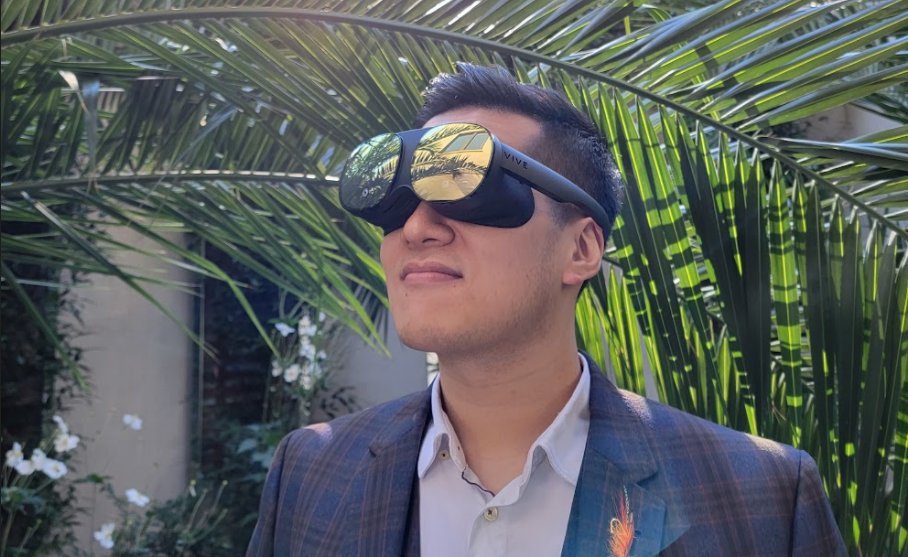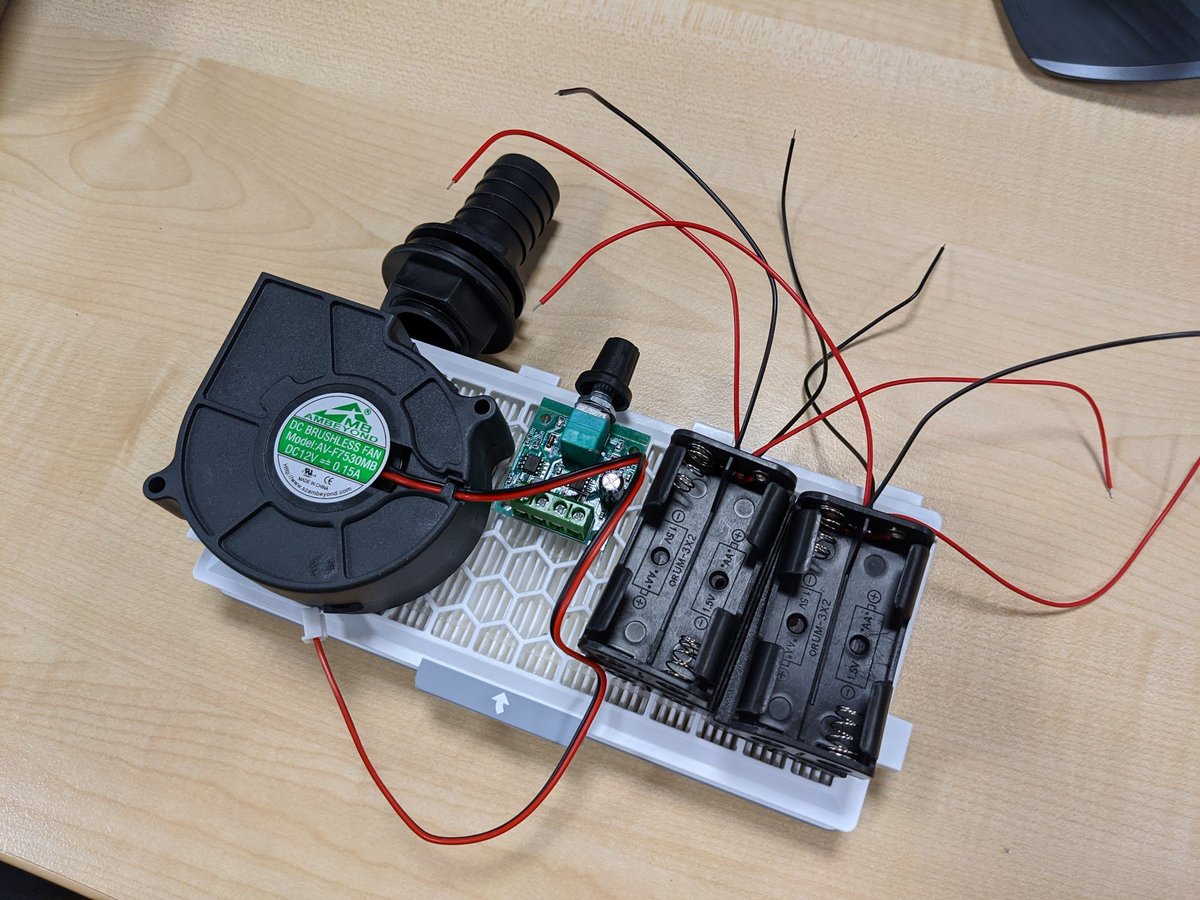Announcing VIVE Flow, our first pair of immersive glasses! (deep dive thread 🧵)
👓Super Compact
📖Foldable
🪶Super lightweight (lighter than some phones)
💨High Performance
🔋 Incredibly Power Efficient
🧠Improve your mental wellness
📺Your private cinema
(1/25 continued...🧵)
👓Super Compact
📖Foldable
🪶Super lightweight (lighter than some phones)
💨High Performance
🔋 Incredibly Power Efficient
🧠Improve your mental wellness
📺Your private cinema
(1/25 continued...🧵)

First let me go into some background. Earlier this year we launched VIVE Pro 2 and VIVE Focus 3, our best in class PCVR and Standalone headsets.
At HTC, we're constantly thinking about how to make VR more accessible, how to improve the way we use immersive computing.
(2/25)
At HTC, we're constantly thinking about how to make VR more accessible, how to improve the way we use immersive computing.
(2/25)
When you look at personal computing there are 3 key segments
🖥️Desktop
💻Laptop
📱Tablet
Despite there being tablets powerful than desktop of a few years ago all 3 segments still exist because they have their own audiences, e.g desktops are always going to be more powerful
(3/25)
🖥️Desktop
💻Laptop
📱Tablet
Despite there being tablets powerful than desktop of a few years ago all 3 segments still exist because they have their own audiences, e.g desktops are always going to be more powerful
(3/25)
So for us, we had something similar.
Vive Pro 2 if you want the best performance PCVR
Vive Focus 3 for best performance w/ portability
So we wanted to make something that was more created to be incredibly portable, and bring use cases that existing headsets just couldn't
(4/25)
Vive Pro 2 if you want the best performance PCVR
Vive Focus 3 for best performance w/ portability
So we wanted to make something that was more created to be incredibly portable, and bring use cases that existing headsets just couldn't
(4/25)
We think we've achieved that with VIVE Flow.
The first reaction from everyone we've shown it to is this thing is so compact and light!
Cramming in everything we wanted was difficult and I'll explain why and how we achieved it.
(5/25)
The first reaction from everyone we've shown it to is this thing is so compact and light!
Cramming in everything we wanted was difficult and I'll explain why and how we achieved it.
(5/25)

The weight of VIVE Flow is 189g (or 6.67 f̶r̶e̶e̶d̶o̶m̶ ̶u̶n̶i̶t̶s̶ ounces).
To put that in perspective, the phones we used to demo with were heavier. These included the Samsung A52S 5G 190g, Oppo Find X3 Pro 193g, and so many more.
(6/25)
To put that in perspective, the phones we used to demo with were heavier. These included the Samsung A52S 5G 190g, Oppo Find X3 Pro 193g, and so many more.
(6/25)
There were 2 ways we were able to achieve the small form factor.
#1 adding a diopter. But adding a diopter, we could eliminate the space we usually would reserve for glasses by allowing you to adjust the focus!
(7/25)
#1 adding a diopter. But adding a diopter, we could eliminate the space we usually would reserve for glasses by allowing you to adjust the focus!
(7/25)
#2 We shrunk the optical tube with a new lens & display assembly.
By using what I've personally called black magic optical wizardry, a combination of half mirrors & polarisers make the assembly SUPER thin and still achieve 100° fov AND 3.2k res (combined)
(8/25)
By using what I've personally called black magic optical wizardry, a combination of half mirrors & polarisers make the assembly SUPER thin and still achieve 100° fov AND 3.2k res (combined)
(8/25)

While it's no 120° that you see with our setup in Focus 3 and Pro 2, that was a trade-off we had to make for form factor
The size and weight of VIVE Flow allowed us to use this brand new arms design instead of a standard headstrap. Any heavier and it wouldn't be feasible
(9/25)
The size and weight of VIVE Flow allowed us to use this brand new arms design instead of a standard headstrap. Any heavier and it wouldn't be feasible
(9/25)

Those arms really allows VIVE Flow to outshine standard headset design in certain uses.
1. It's great for portability as it can just fold up into something small
2. You can lie down or against a headrest and use it without any discomfort!
(10/25)
1. It's great for portability as it can just fold up into something small
2. You can lie down or against a headrest and use it without any discomfort!
(10/25)

We actually have a second set of hinges that are designed to help accommodate different head sizes and shapes. We put a lot of work into it to even out the tension so different head shapes should have a similar level of comfort.
(11/25)
(11/25)
Cramming so much tech in a tight space required a new thermal system as well. But it's not just to cool the headset.
By drawing cool air in from the facial interface area, we can replenish your face with fresh cool air to reduce fogging and heat build up!
(12/25)
By drawing cool air in from the facial interface area, we can replenish your face with fresh cool air to reduce fogging and heat build up!
(12/25)
To also help with comfort, we have a removeable (magnetic) face cushion that's made from a soft, breathable fabric. It's also designed to be washable!
We'll have wide and narrow versions available for different face shapes.
(13/25)
We'll have wide and narrow versions available for different face shapes.
(13/25)

Let's talk about power. VIVE Flow is tuned to have a perfect balance of performance and power consumption. It's actually incredibly performant for how much power it consumes.
It has a USB-C connector on the right arm to plug into a power source.
(14/25)
It has a USB-C connector on the right arm to plug into a power source.
(14/25)

The main reason is we found in a lot of situations you didn't really need it to have a battery built in to sustain it like an AIO. It would've compromised the size & weight of Flow.
So we had to make sure it was super flexible when it came to power sources
(15/25)
So we had to make sure it was super flexible when it came to power sources
(15/25)
We set ourselves a power budget of 7.5W. Not exactly high. Reason is that was what USB 3.0 could deliver, a protocol we find in most devices now.
Flow can be powered with:
-A wall charger
-The USB port on a plane/train
-Battery bank (5hrs on 10000mAh)
-Even your phone!
(16/25)
Flow can be powered with:
-A wall charger
-The USB port on a plane/train
-Battery bank (5hrs on 10000mAh)
-Even your phone!
(16/25)
Let's talk about interactivity & controls. For something this portable, we had to think about interactions.
If we required a controller, there are downsides. You'd have to remember to bring it AND keep it charged.
So we thought about what if we used the phone?
(17/25)
If we required a controller, there are downsides. You'd have to remember to bring it AND keep it charged.
So we thought about what if we used the phone?
(17/25)
Since we always have our phones on us all day, and it's filled with sensors, it was a great candidate. For the uses & interactions we envisaged for Flow, it was more than enough.
The phone connects via BT LE and is super intuitive to use.
*Hand tracking also coming later
(18/25)
The phone connects via BT LE and is super intuitive to use.
*Hand tracking also coming later
(18/25)

The app also is what you use to set up VIVE Flow, including connecting to WiFi and also setting up call/text/notification mirroring (if you want to).
Notifications will appear as a toast popup in your lower periphery when you're in Flow so it doesn't disturb you.
(19/25)
Notifications will appear as a toast popup in your lower periphery when you're in Flow so it doesn't disturb you.
(19/25)
My favourite feature as a traveller, VIVE Flow can run VR content natively in the headset, but one of the cool features we introduced is mirroring from your phone.
We're using Miracast for this. It allows you to mirror your phone into your giant private cinema screen.
(20/25)
We're using Miracast for this. It allows you to mirror your phone into your giant private cinema screen.
(20/25)

We used Miracast for a few reasons:
1. It's native in most Android phones so we can initiate the connection seamlessly with minimal interaction
2. It supports HDCP, so we can cast DRM protected content to Flow as well! Including Netflix, Disney+, HBO Max, and more
(21/25)
1. It's native in most Android phones so we can initiate the connection seamlessly with minimal interaction
2. It supports HDCP, so we can cast DRM protected content to Flow as well! Including Netflix, Disney+, HBO Max, and more
(21/25)
But you can use it for beyond just videos. If you use something like Calm or Headspace, you can bring those into Flow
Mental wellness is something that's different to everyone. We wanted to accommodate for that range of uses. Oh and you can adjust blue light inside too!
(22/25)
Mental wellness is something that's different to everyone. We wanted to accommodate for that range of uses. Oh and you can adjust blue light inside too!
(22/25)
To really give you an immersive feel inside VIVE Flow, we have a pair of awesome speakers embedded in the arms. They provide a really rich audio experience. It's hard to explain, but everyone I've shown it to has come out surprised at how much better it was than expected
(23/25)
(23/25)

But if you want your audio to be private or are in a noisy environment, you can just pair your own pair of Bluetooth head/earphones!
And if you are using it for social VR, the dual microphones up front will help with echo and bg noise cancellation.
(24/25)
And if you are using it for social VR, the dual microphones up front will help with echo and bg noise cancellation.
(24/25)
So that's a quick deep dive into VIVE Flow! We are so pleased with what we've achieved and can't wait for everyone to try it out.
I'll leave you with this
(25/25)
I'll leave you with this
(25/25)
@threadreaderapp unroll
• • •
Missing some Tweet in this thread? You can try to
force a refresh






